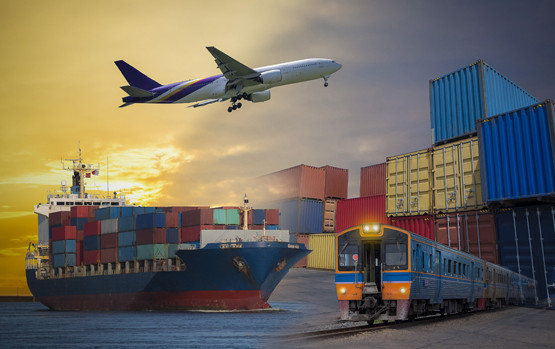
The Importance of Last-Mile Delivery in the Logistics Solution Company in India
In recent years, India's logistics sector has witnessed a significant transformation, driven by technological advancements and an exponential rise in e-commerce. Among the various components of the logistics supply chain, last-mile delivery has emerged as a crucial element, particularly in the Indian context. This article delves into the importance of last-mile delivery within the Logistics solution company in india, exploring its challenges, innovations, and future prospects.
Understanding Last-Mile Delivery
Last-mile delivery refers to the final step in the delivery process where goods are transported from a distribution hub to the end consumer. This stage is critical because it directly impacts customer satisfaction and operational efficiency. The complexities of last-mile delivery in India are heightened by the country's vast geographical expanse, diverse demographic distribution, and infrastructural challenges.
The Rise of E-Commerce and Consumer Expectations
India's e-commerce market has experienced phenomenal growth, projected to reach $200 billion by 2026. This surge is driven by increasing internet penetration, smartphone usage, and a growing middle class with disposable income. Consequently, consumer expectations have evolved. Modern customers demand faster, more reliable, and flexible delivery options, placing immense pressure on logistics companies to enhance their last-mile delivery capabilities.
Challenges in Last-Mile Delivery
1. Geographical Diversity
India's geographical diversity poses a significant challenge for last-mile delivery. From the congested lanes of metropolitan cities to remote rural areas, the logistics network must navigate varying terrains and infrastructure conditions. Ensuring timely and efficient deliveries in such diverse environments requires robust planning and adaptive strategies.
2. Infrastructure Limitations
Despite advancements, India still faces infrastructural limitations, particularly in rural and semi-urban areas. Poor road conditions, inadequate warehousing facilities, and limited access to technology hinder the smooth execution of last-mile delivery. These challenges necessitate innovative solutions to bridge the infrastructural gap.
3. Traffic Congestion
Urbanization has led to increased traffic congestion in major cities, complicating the logistics of last-mile delivery. Navigating through crowded streets and managing delivery timelines amidst traffic jams demands strategic routing and efficient fleet management.
4. High Delivery Costs
Last-mile delivery is often the most expensive part of the logistics chain, accounting for up to 53% of the total shipping cost. Factors such as fuel prices, labor costs, and the need for multiple delivery attempts in case of failed deliveries contribute to the high expenditure. Logistics companies must find ways to optimize costs while maintaining service quality.
Innovations Driving Last-Mile Delivery
1. Technology Integration
Technology plays a pivotal role in transforming last-mile delivery. Advanced tracking systems, GPS-enabled vehicles, and real-time data analytics enhance visibility and efficiency. Companies are increasingly investing in route optimization software, predictive analytics, and AI-driven logistics platforms to streamline operations and reduce delivery times.
2. Drones and Autonomous Vehicles
The adoption of drones and autonomous vehicles is revolutionizing last-mile delivery. These technologies promise faster and more cost-effective deliveries, particularly in hard-to-reach areas. Regulatory challenges and safety concerns remain, but ongoing pilot projects indicate a promising future for drone-based delivery systems.
3. Micro Warehousing
Micro warehousing, or localized distribution centers, is gaining traction as a solution to reduce delivery times and costs. By strategically placing small warehouses closer to high-demand areas, companies can ensure quicker deliveries and better inventory management. This model is particularly effective in urban areas with high order volumes.
4. Crowdsourced Delivery Models
Crowdsourced delivery models leverage the power of the gig economy. By employing local drivers and delivery personnel, logistics companies can expand their reach and offer flexible delivery options. This approach not only reduces operational costs but also provides employment opportunities at the local level.
Enhancing Customer Experience
1. Flexible Delivery Options
Offering flexible delivery options such as same-day, next-day, or scheduled deliveries enhances customer satisfaction. Consumers appreciate the convenience of choosing delivery windows that suit their schedules, leading to higher retention rates and positive brand perception.
2. Real-Time Tracking
Real-time tracking of shipments provides customers with transparency and peace of mind. Mobile apps and web portals that offer live updates on delivery status, estimated arrival times, and the ability to communicate with delivery personnel contribute to a seamless delivery experience.
3. Efficient Returns Management
Efficient returns management is a critical aspect of last-mile delivery. A hassle-free returns process, including easy pick-ups and quick refunds, strengthens customer trust and loyalty. Logistics companies are focusing on creating robust returns infrastructure to handle the increasing volume of e-commerce returns.
Sustainability in Last-Mile Delivery
Sustainability is becoming a key consideration in last-mile delivery. With growing environmental concerns, logistics companies are adopting eco-friendly practices. Electric vehicles, bicycle couriers, and sustainable packaging solutions are being integrated into delivery operations to reduce carbon footprints and promote green logistics.
The Future of Last-Mile Delivery in India
The future of last-mile delivery in India looks promising, driven by continuous innovation and a customer-centric approach. Several trends are expected to shape the industry:
1. Increased Automation
Automation will play a significant role in enhancing last-mile delivery efficiency. From automated sorting centers to autonomous delivery vehicles, technology will reduce human intervention and improve accuracy.
2. Collaborative Logistics
Collaboration among logistics companies, retailers, and technology providers will become more prevalent. Shared resources, data integration, and strategic partnerships will enable cost savings and operational synergies.
3. Smart Cities Initiatives
India's smart cities initiatives will create better infrastructure and connectivity, facilitating smoother last-mile deliveries. Enhanced urban planning, improved public transportation, and smart traffic management systems will contribute to a more efficient logistics ecosystem.
Conclusion
In conclusion, last-mile delivery is a critical component of the Logistics solution company in india. As consumer expectations continue to rise, logistics companies must navigate various challenges and leverage technological innovations to deliver exceptional service. The future of last-mile delivery in India is bright, marked by increased automation, sustainability, and collaborative efforts. By prioritizing customer satisfaction and operational efficiency, the logistics sector can significantly contribute to India's economic growth and digital transformation.